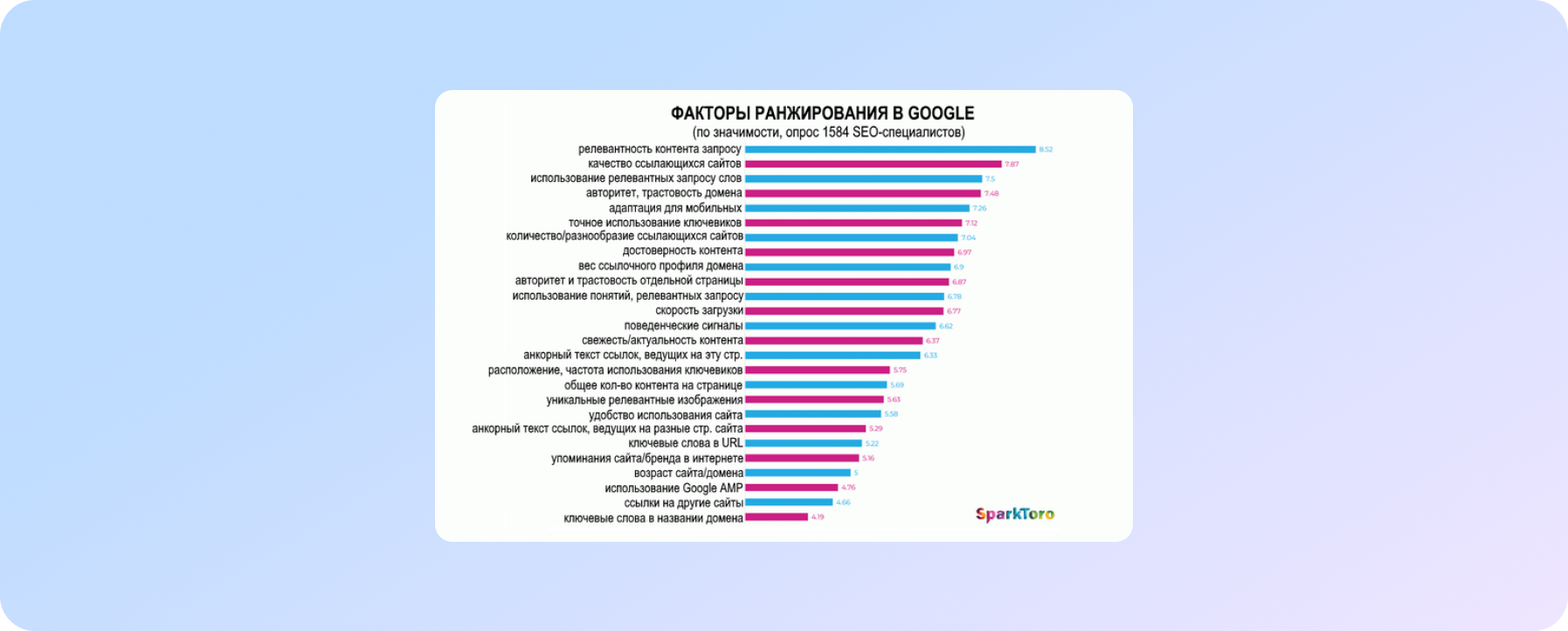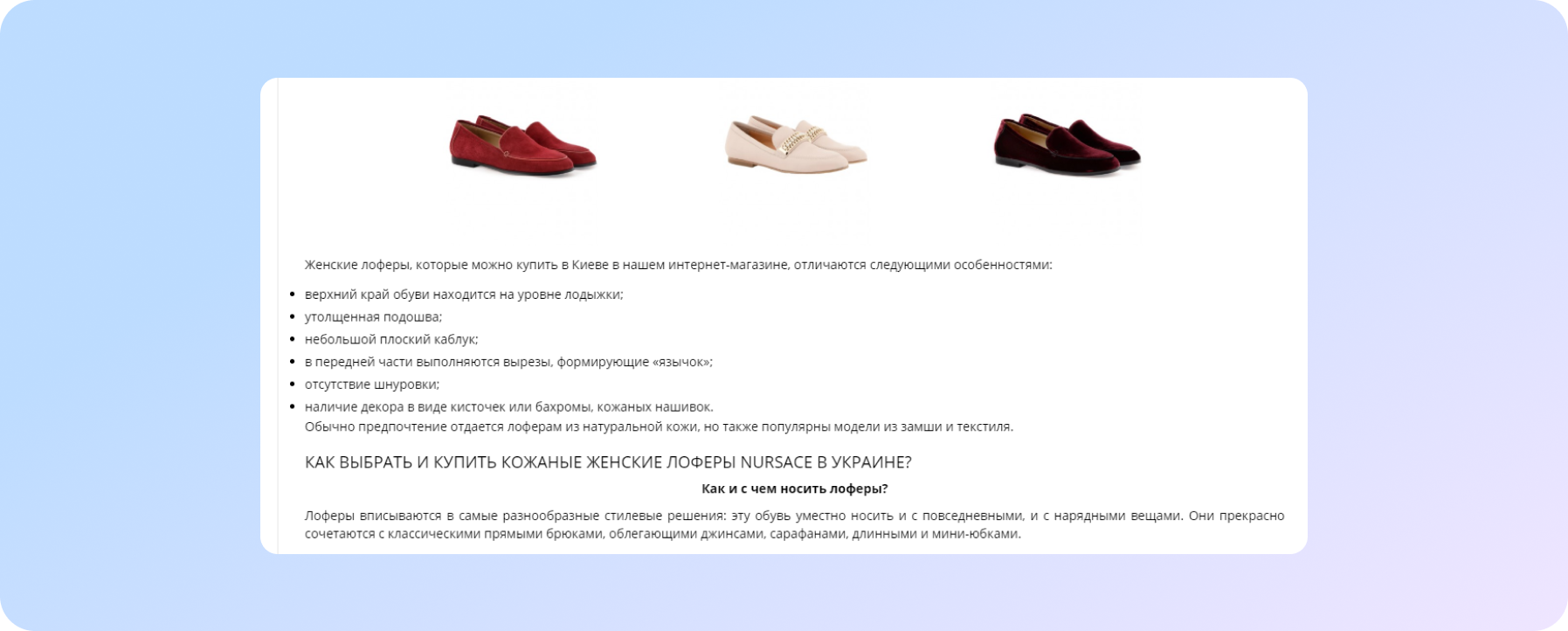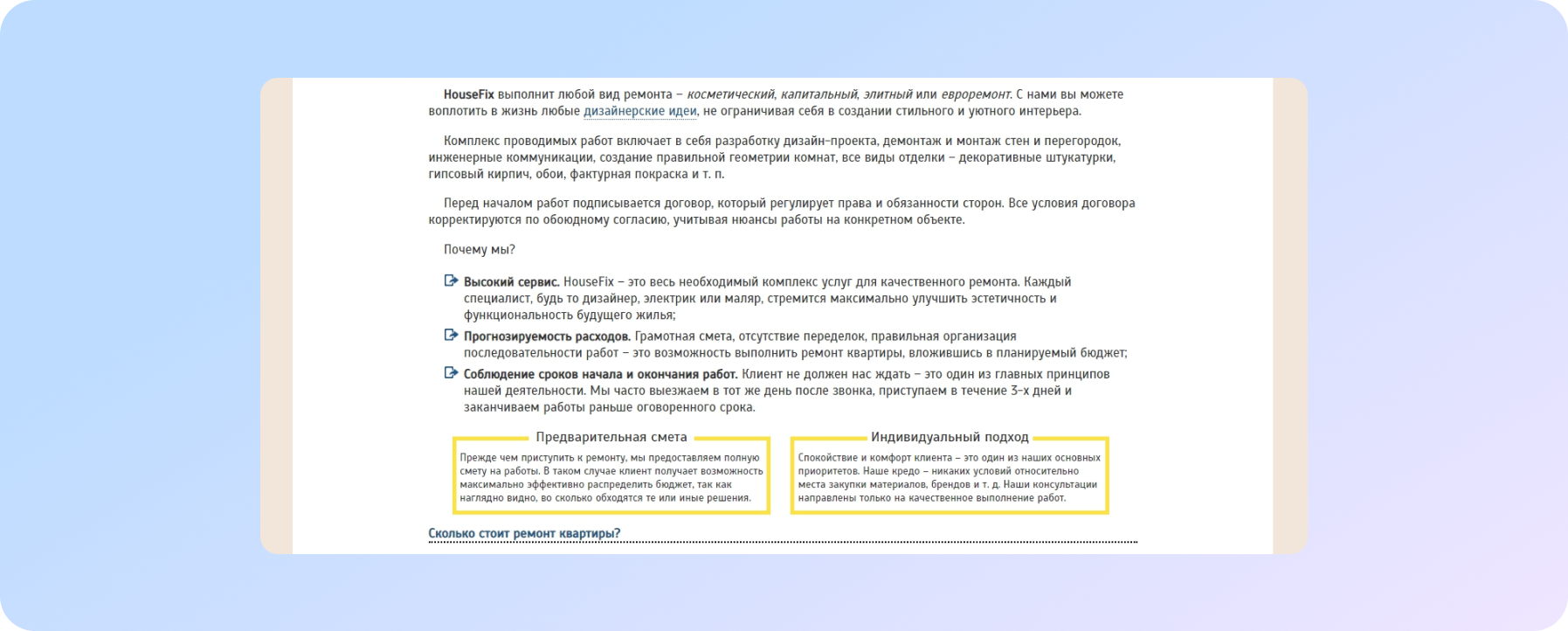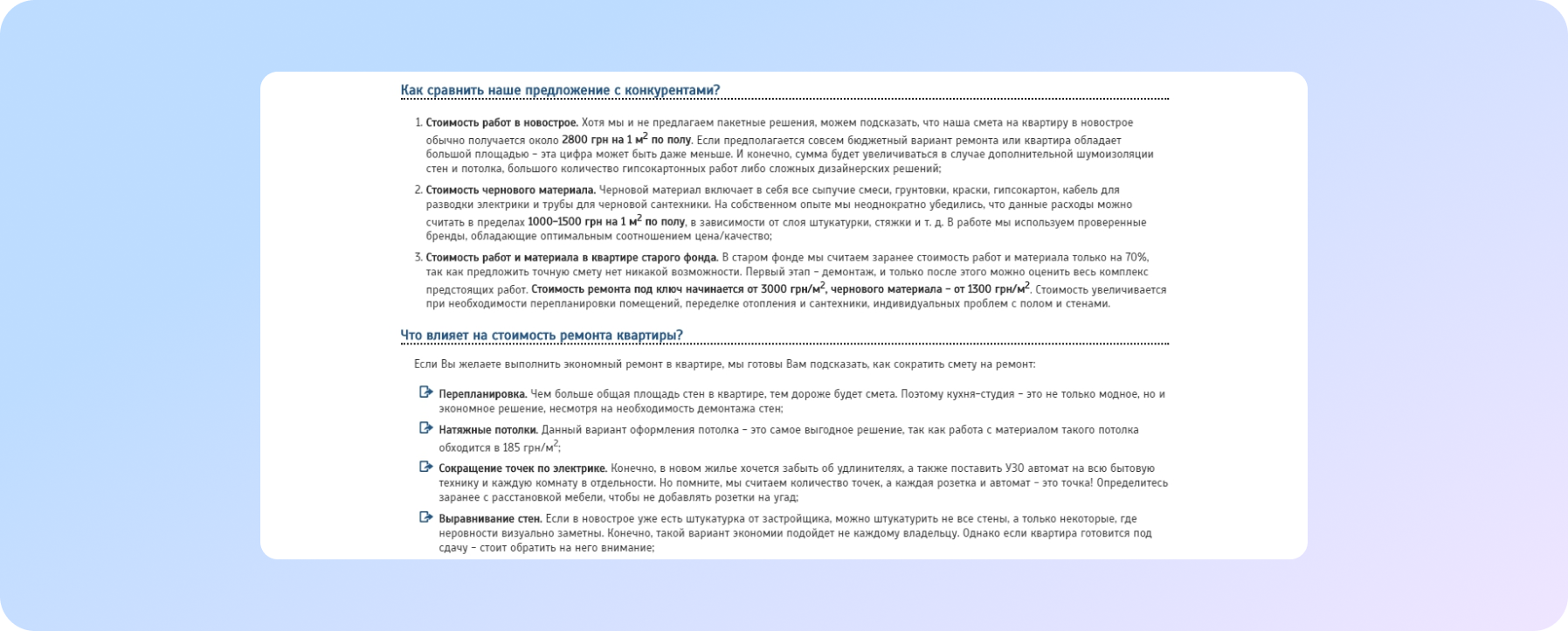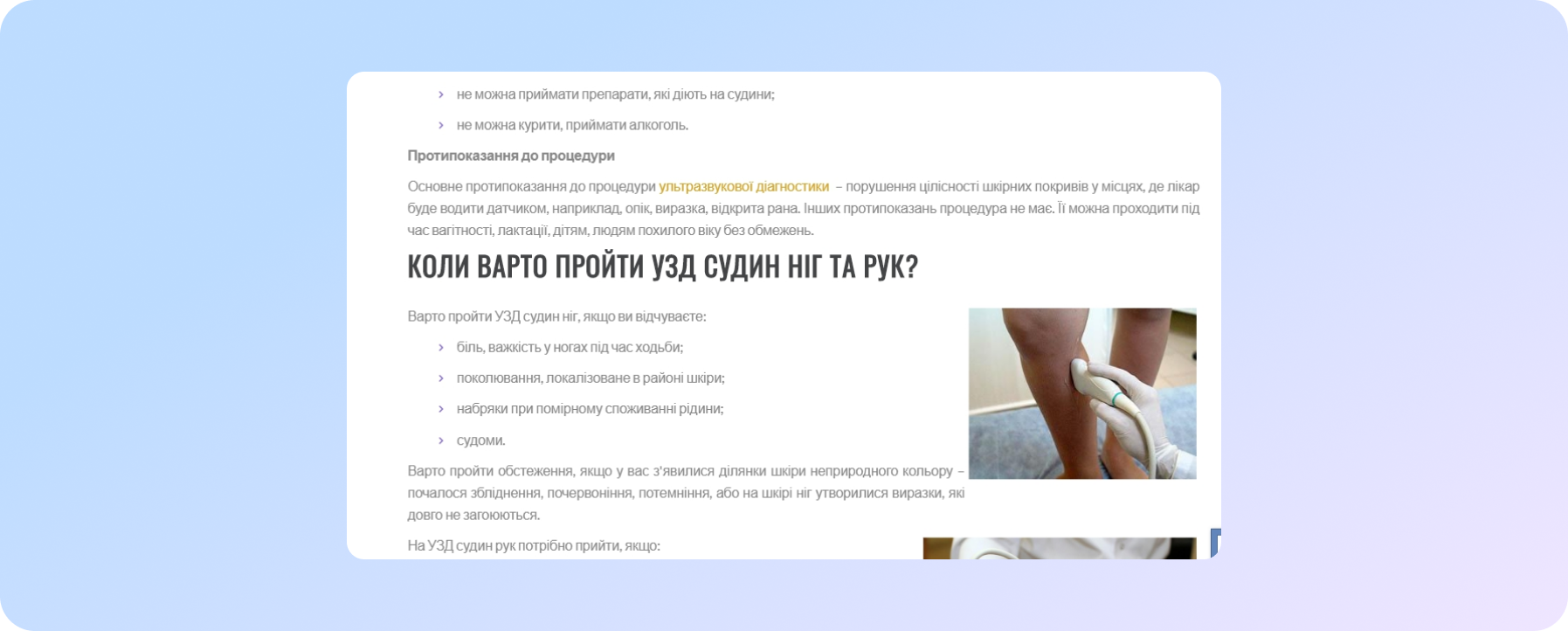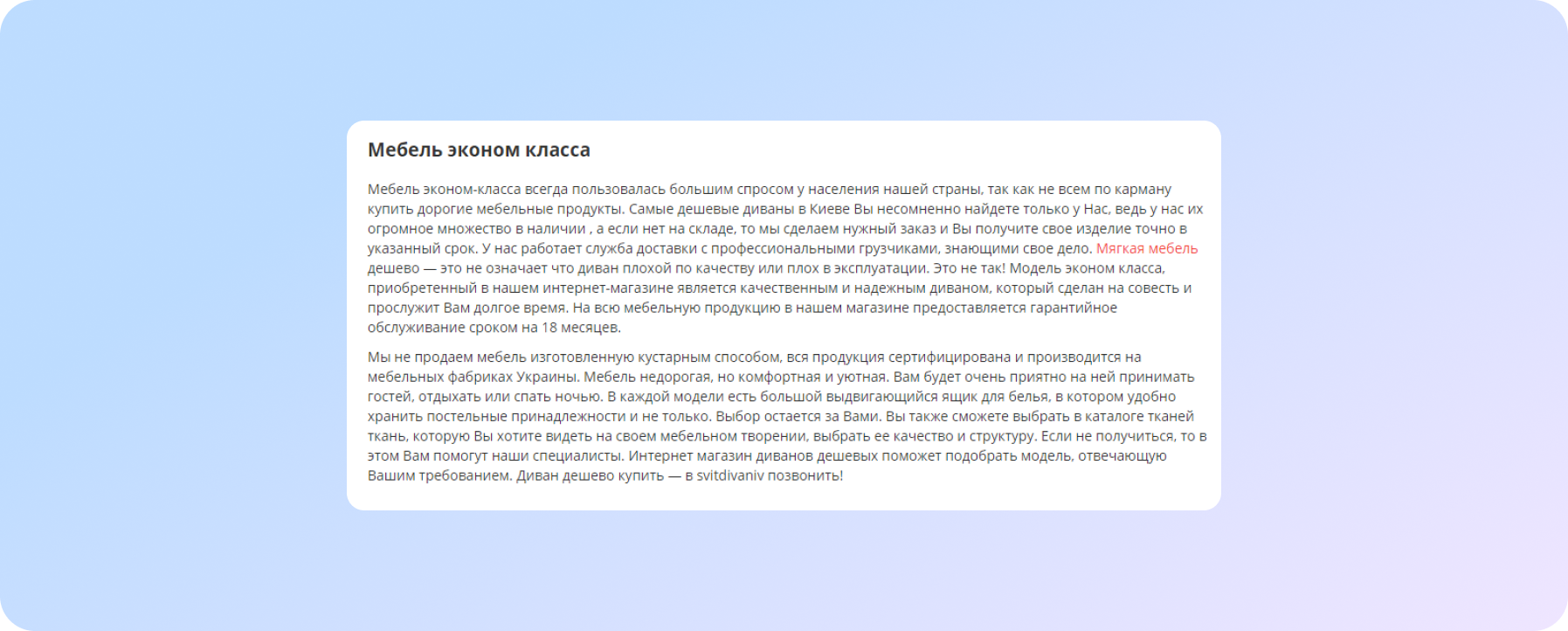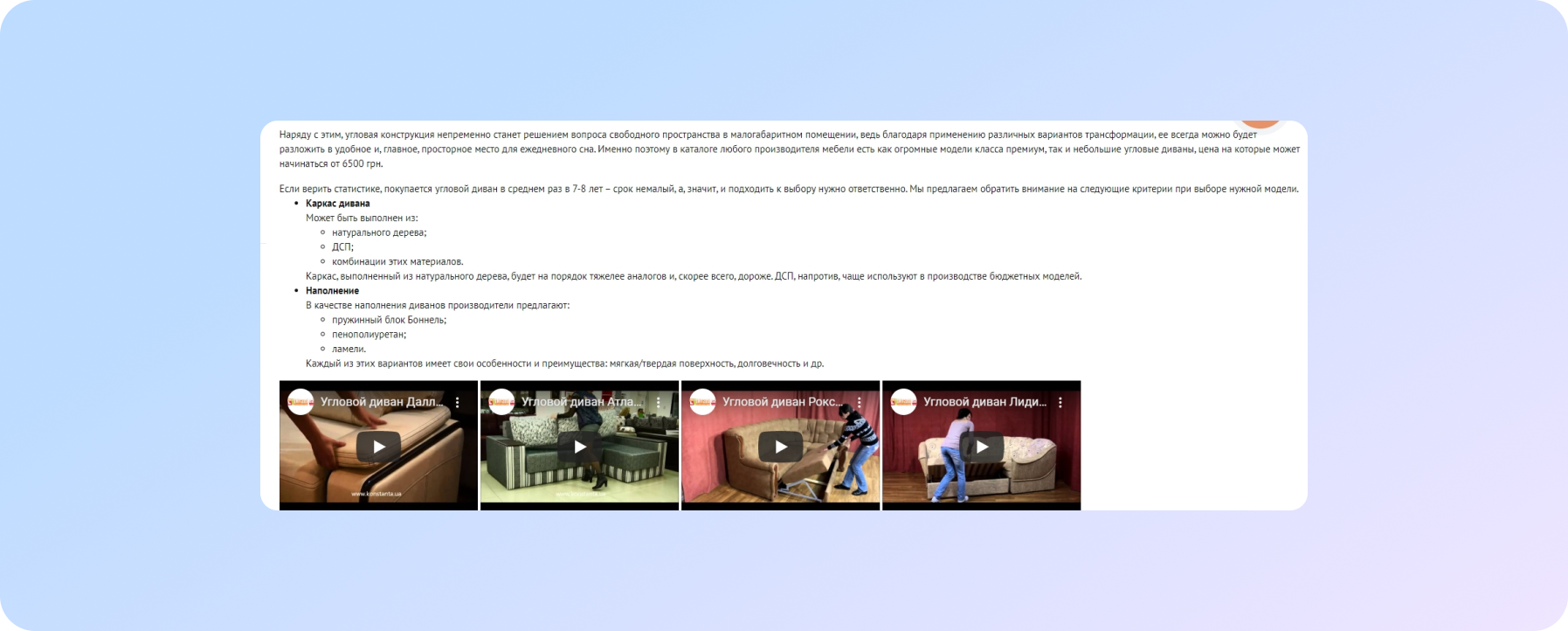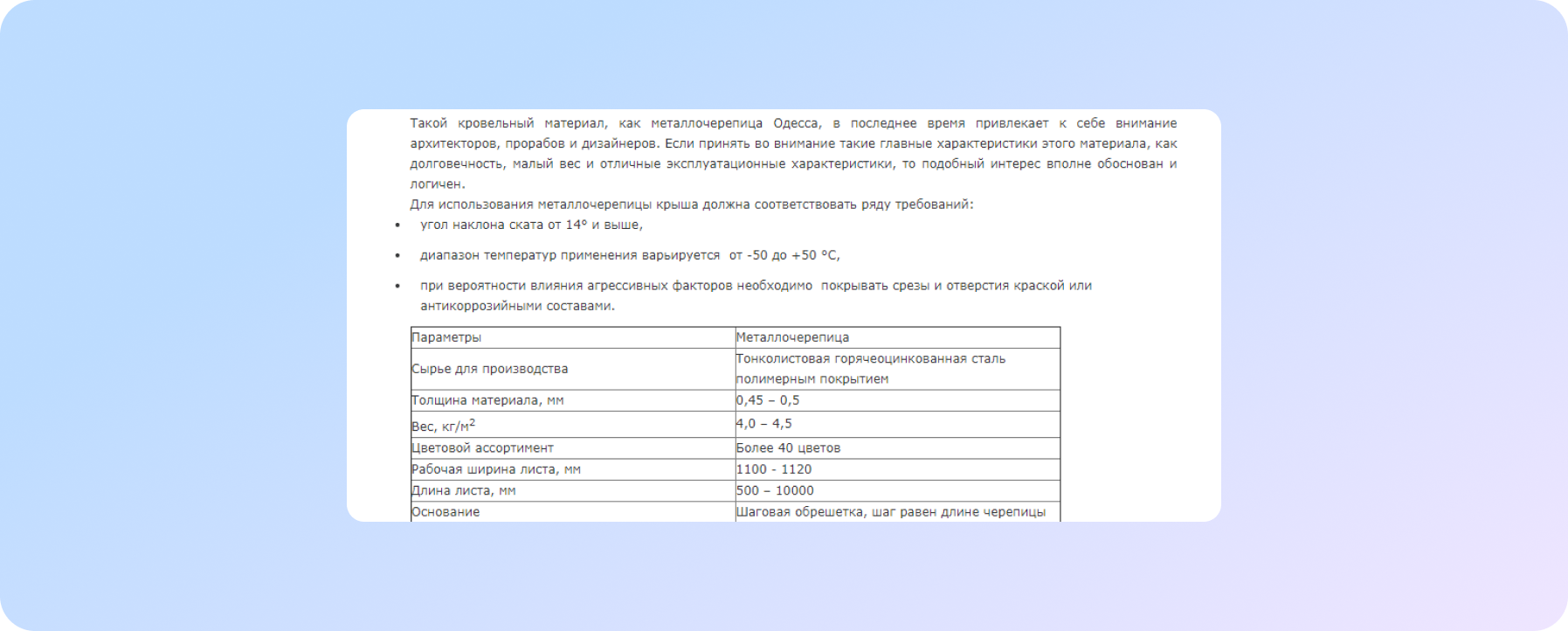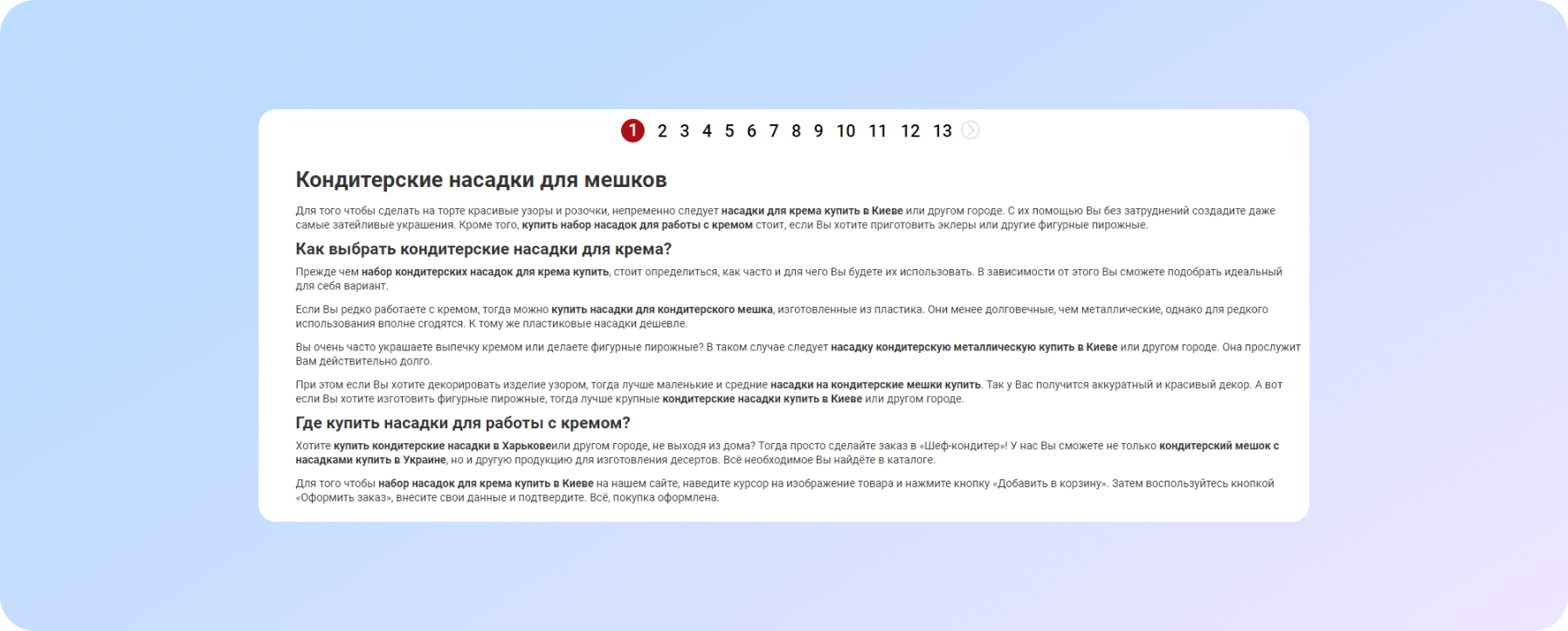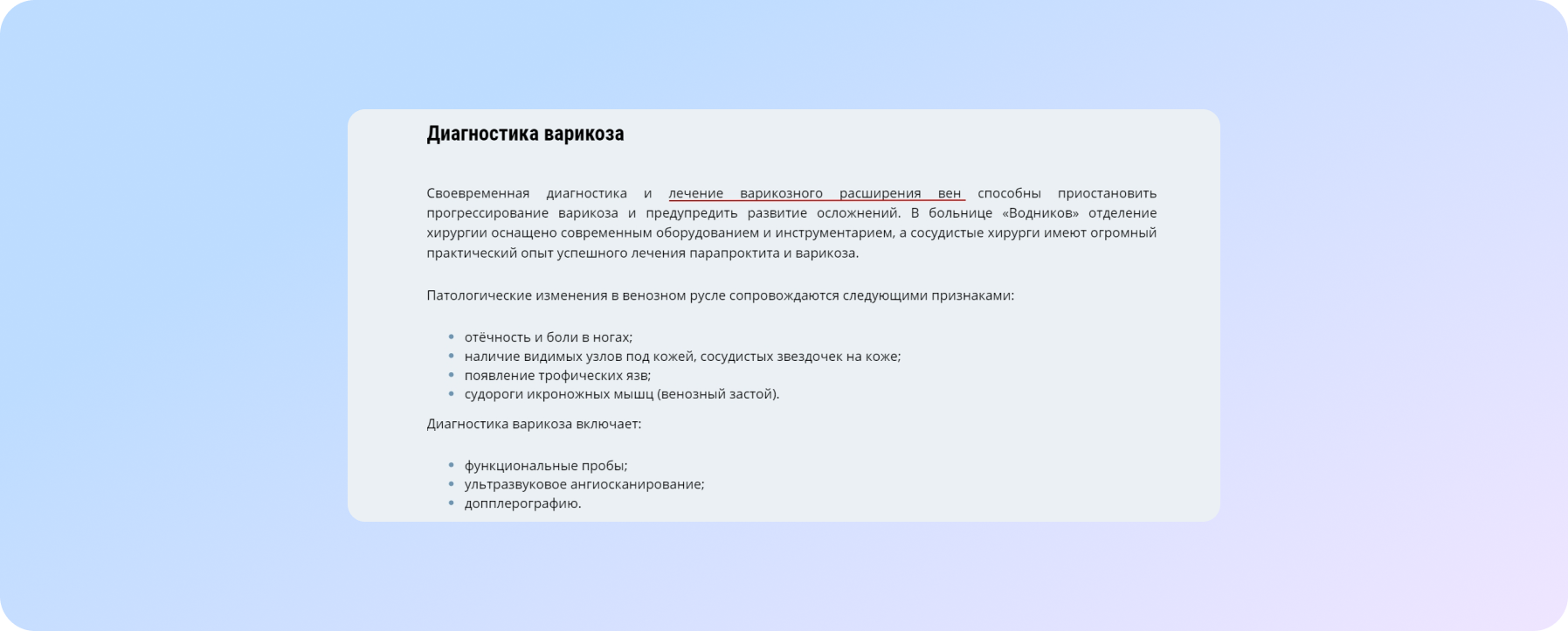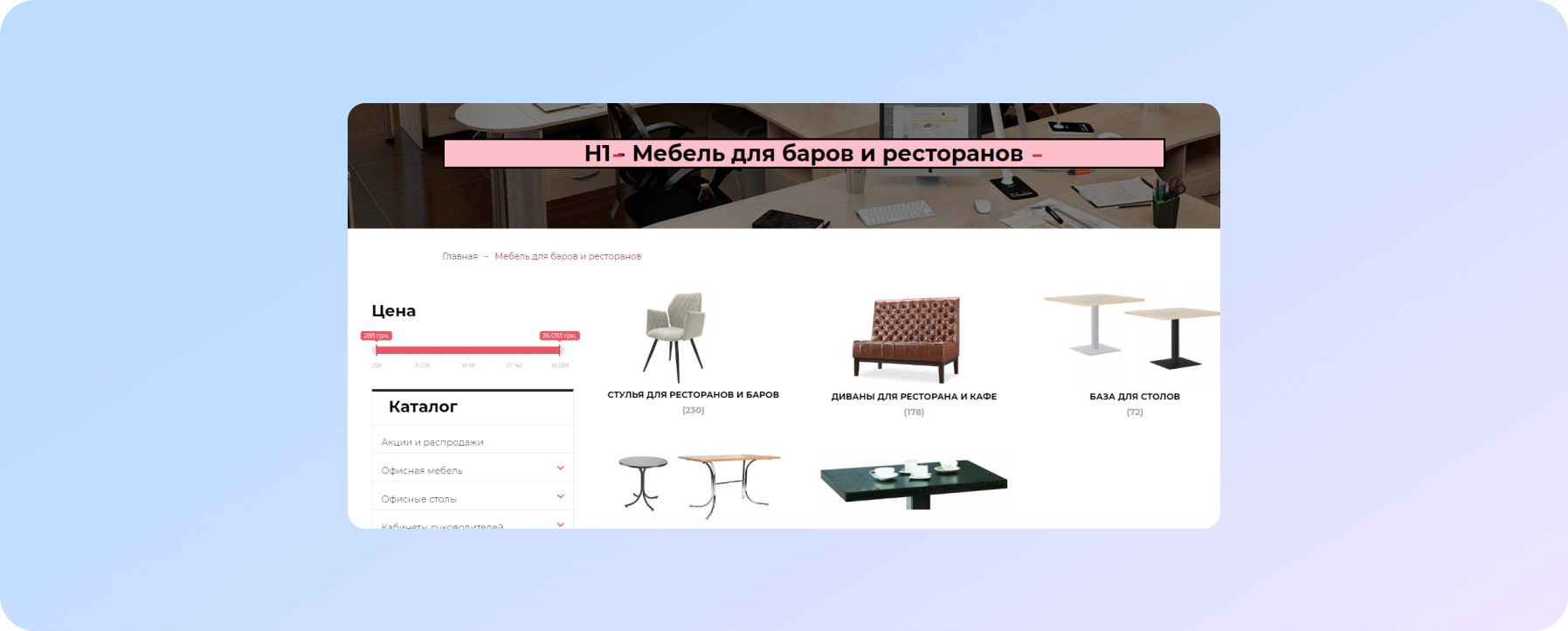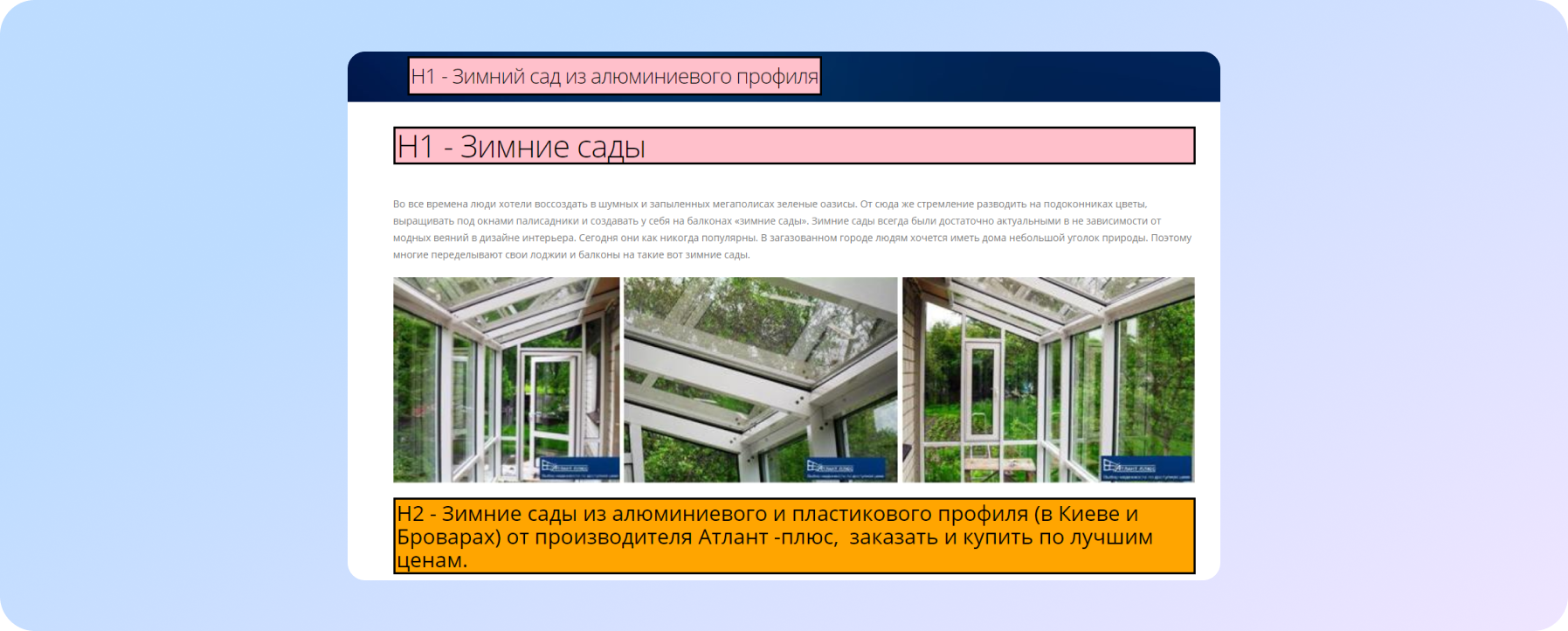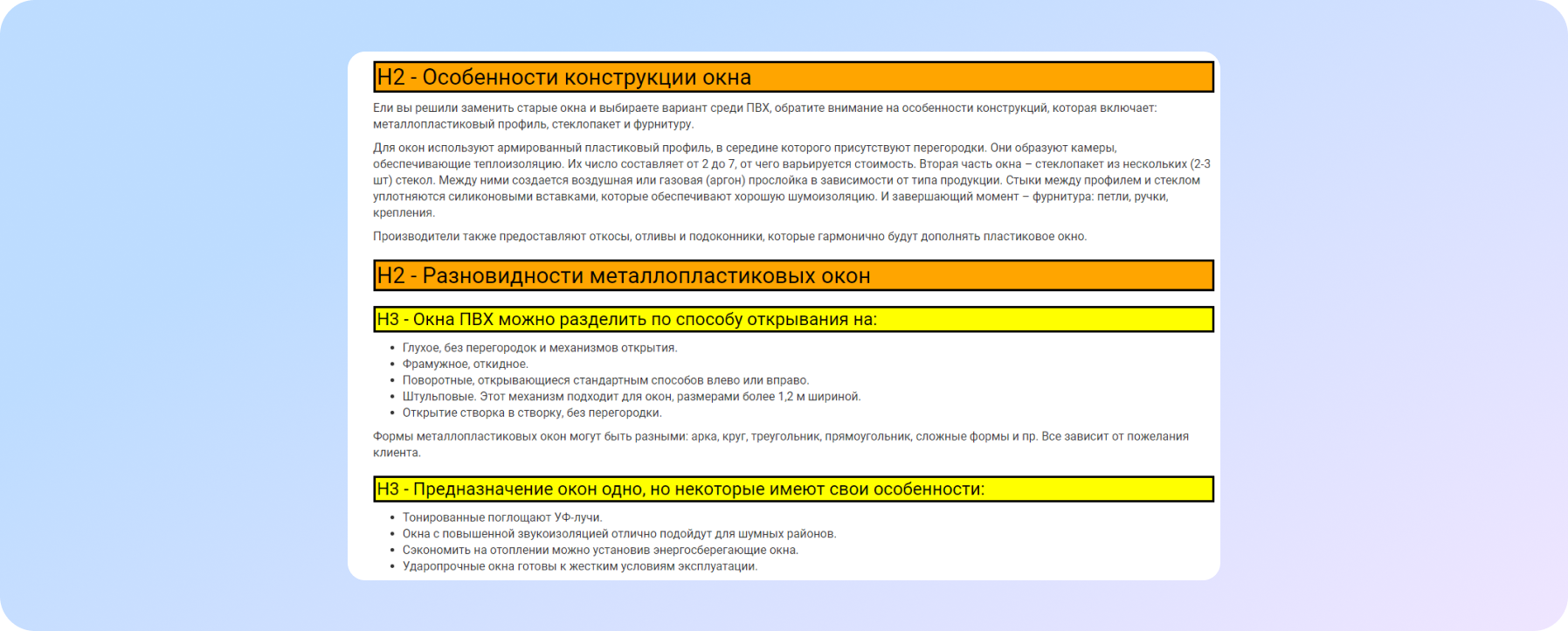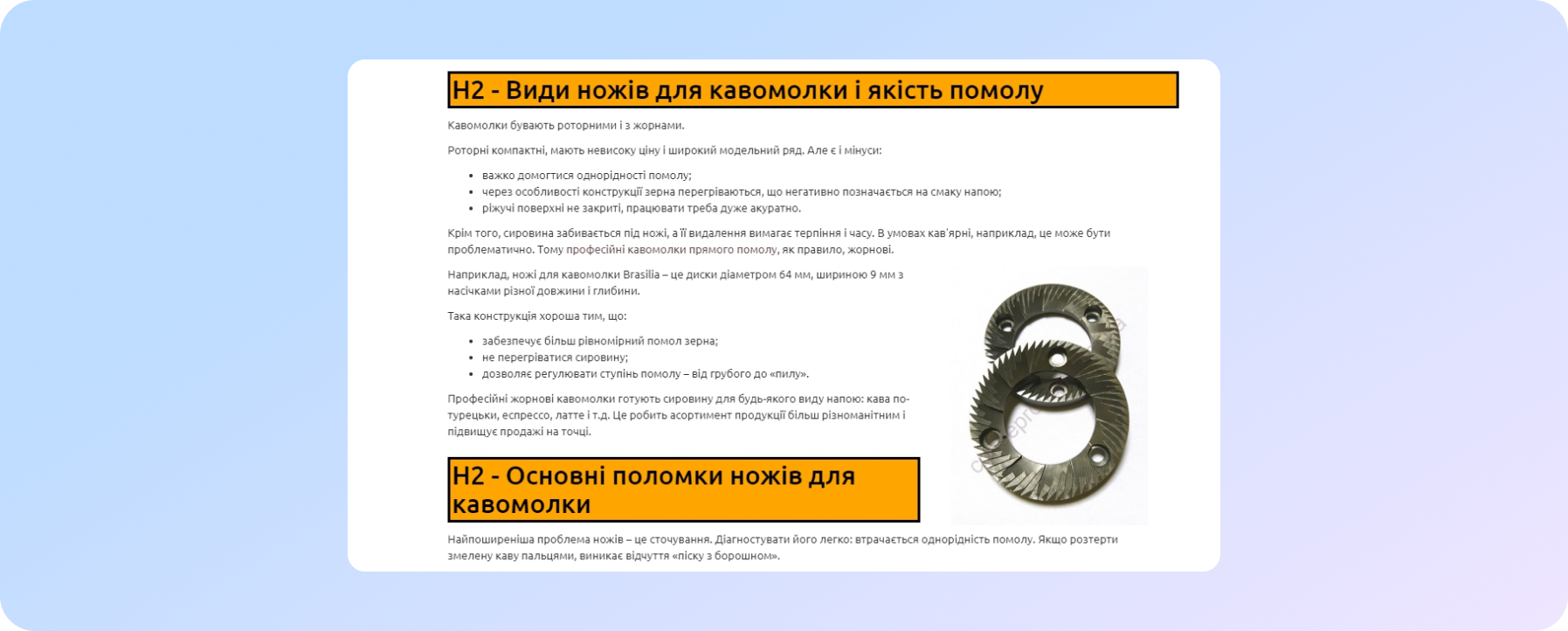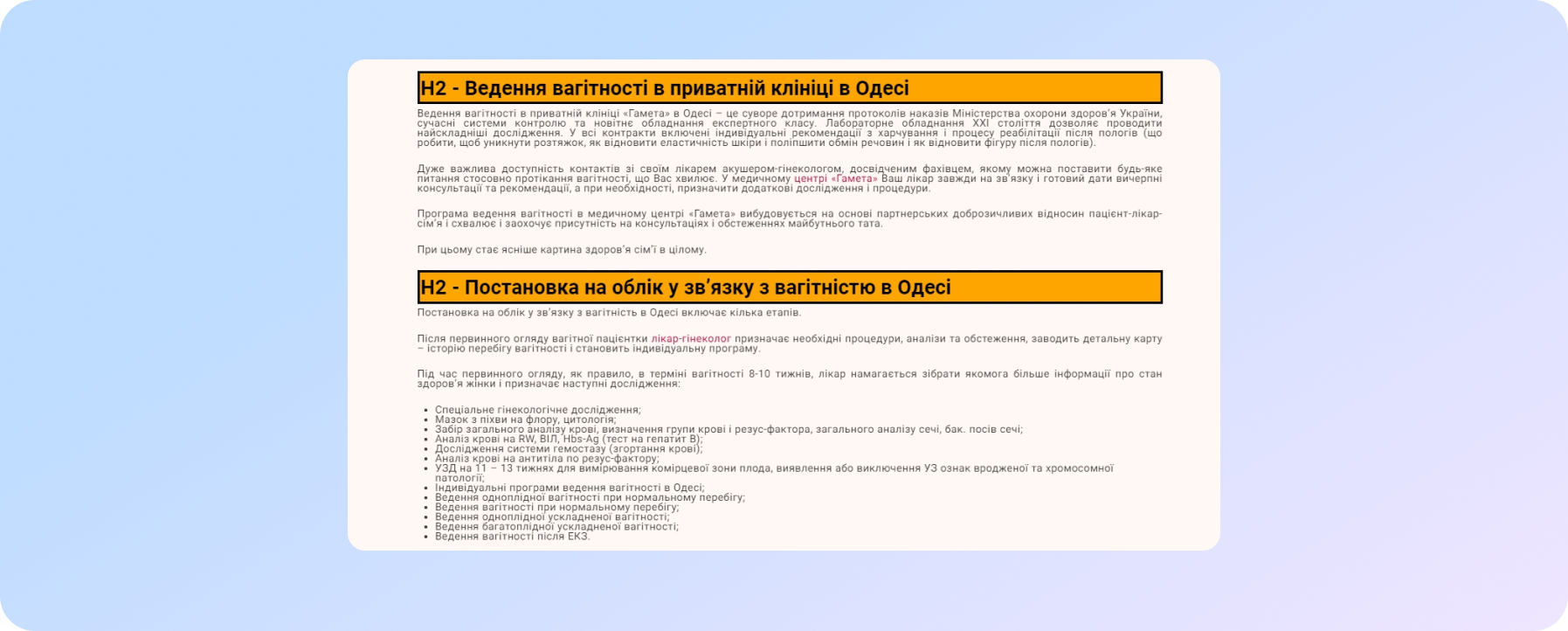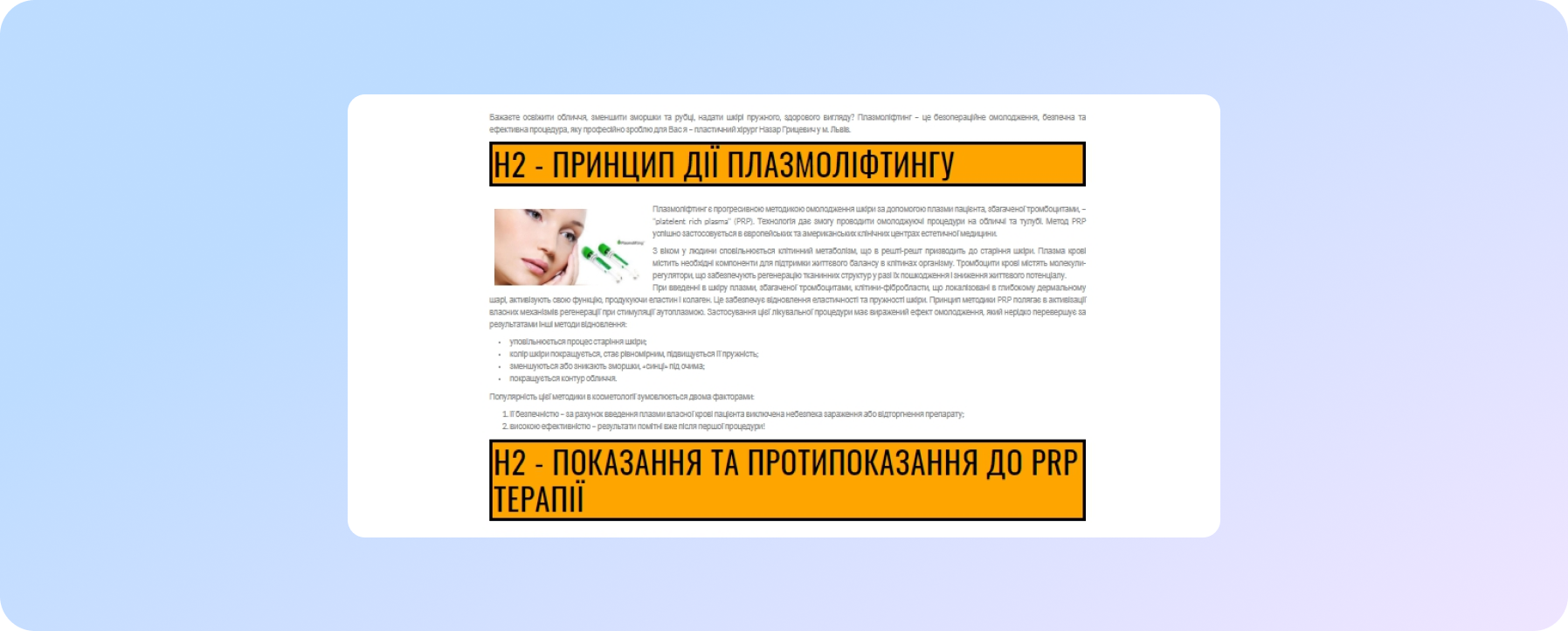No magic - just our painstaking joint work on the site
Text Ranking Factors - Google
So, you have a website and for a long time you wanted to update its texts but you still have no time or spare hands to do it? We advise you not to delay the analysis and updating of texts for sites for a long time. In 2020, text optimization will remain one of the important website ranking factors, which, together with all the other factors, affects the position of your resource in search results.
At the same time, the requirements for proper text optimization are constantly changing due to the development and complication of Google search algorithms.
The article contains many specific examples of good and bad texts, the criteria for text evaluation explained in detail and recommendations for optimization. You will learn:
- what text from a copywriter can be considered good;
- how to optimize texts for search engines;
- some important optimization chips;
- what happens if you re-optimize the text.
In 20 minutes of reading, you will understand what you need to check on your text, and you will be able to fix the bottlenecks.
Why is text important to search engines?
In August 2019, SparkToro surveyed 1,584 SEOs to learn about the top ranking factors and trends in Google. After analyzing the responses, it became clear that the most important text factors are:
- relevance (correspondence) of the site page content to the promoted search queries;
- use of words corresponding to queries (synonyms and words that define the subject);
- reliability and expertise of the content (when you see not a rewrite, but information based on the experience and practice of an expert in a particular subject);
- relevance and freshness of information (here's the moment where we advise you to periodically update the texts on the site).
Users love good texts: in the first place - usefulness, completeness of information and expertise
Let's be honest, if we take the first 50 sites in the field of electronic commerce (online stores), we can see that the vast majority have practically no texts. Site owners believe that no one reads the texts, since the user is focused on studying the assortment and choosing a product.
But what's really going on?
Our experience shows that relevant and expert content is still needed, especially for young sites that are just entering the market. Making category pages completely without content can only be afforded by the kings of the market, who hold the top due to other factors:
- domain age;
- trust;
- good behavioral factors;
- big product range and others.
Look at the screenshot with a piece of text on the Loafers category page of an online shoe store. The text describes in detail what loafers are, how and with what to wear them, and describes the assortment of loafers in this store.
I will also show a page from the TOP-10, but without content:
A completely different situation arises when we talk about the websites of companies that provide services to medical centers, construction companies, beauty salons, and dental clinics. In this case the text is of great importance, both for the search robot and for the site visitor.
For example, if a user enters the query "renovation of apartments in Odessa", then they are interested in answers to a number of important questions:
- what types of repair work does the company offer;
- are there designer services?
- what materials are used;
- whether materials are delivered by the company to the facility;
- whether an advance payment is required;
- turnaround time;
- is there a guarantee.
And this is not the whole list of questions that interest a person on the brink of repairs. Whether the user will order repair services on your site or will search elsewhere depends on the completeness and tone of the content on the site. If you care and answer all questions (they are easy to collect) in advance and back up your answers with reviews, photos of the work done, better if you add some specials - #clientisyours.
I will show fragments of high-quality text just on the site of repair services.
Looks thorough, right? And it's not so hard for you to do it too.
What text does the customer want to receive from the copywriter?
The process of creating a quality text consists of several important steps:
- Niche research – looking at competitors' websites in order to come across good ideas for your website.
- A deep analysis of the topic features is an attempt to put yourself in the place of a site visitor. At this stage we are trying to understand what questions a user who has landed on our site might be looking for answers to.
- Terms of Reference (TOR) - a detailed description of the scope and content of the text. The results that we got in the first two stages should be formulated in the form of a clear task, and on its basis a quality text will be written. TOR are compiled for each page of each specific site, combined into a common content plan for the site.
The text that the copywriter writes should ideally meet a number of requirements:
- have suitable volume for this page;
- be interesting and useful;
- be easy to understand;
- be reliable;
- be expert;
- be well-written;
- to contain answers to all questions that a site visitor may have regarding the features of particular company services.
Special requirements for text expertise are put forward for certain types of sites - YMYL (Your money or Your life), information from which can cause significant harm to the health or material well-being of site visitors. Among which, in particular, stand out:
- websites that distribute financial information;
- websites offering medical services, as well as containing information about diseases, medicines, diets, and a healthy lifestyle;
- legal websites, including those selling legal services, and a number of others.
Look how detailed is the text from the screenshot below. The website of the medical center describes the preparation for leg vessels ultrasound scan, indications and contraindications for this procedure. It also indicates who should undergo such a procedure and how to prepare for it. The information is expert and comprehensive.
How to determine the amount of content?
There are two main factors to consider:
- Full disclosure of the topic,
- The average content volume on the pages of competitors that are in the top.
There are only three tools that a copywriter is guided by when writing a text with a full disclosure of the topic: TOR, common sense and logic.
When analyzing texts on competitors' websites, we focus on studying the following points:
- sites should be of the same type. That is, if we have a hotel site, then the sites of other hotels will be direct competitors. Aggregator sites such as Booking and the like should not be considered.
- sites with high-quality text do not always get into the top. Therefore, you need to analyze the texts on the competitors' sites wisely. In almost any niche in the top you can find sites with low quality SEO texts. Such texts should not be regarded as examples. Sites can be in the top due to a whole range of different factors - site age, behavioral factors, link profile, and others.
Readability and accessibility of text
Even 5-6 years ago no one thought about the readability of texts. It was enough to roughly enter the keywords and highlight them in bold.
Today, search engines have improved so much that they are quite capable of evaluating the readability and accessibility of text submission. And users have become more legible, no one will waste time reading poorly written or useless text.
That is why, when working on optimizing texts, SPRAVA experts recommend:
- to build texts in the form of consistent and logical fragments;
- to use numbered and bulleted lists;
- to use tables for simplifying the presentation and improving the information visualization;
- to avoid using too long sentences with twisted stylistic turns.
Look at an example of a text piece in which it is difficult for the user to find useful information due to incorrect presentation of the material
Below is an example of a text with lists and emphasis made by bolding individual phrases:
Another good example of a page where a list and a table are used to structure the text:
Spelling and grammar
A lot of spelling and grammatical errors in the text can negatively affect the ranking of the site by search engines. In addition, such errors can lower the level of trust of site visitors. Make sure that texts not checked by the proofreader “shall not pass” on the site. Let this advice be an unbreakable rule for you.
How to optimize text for a search engine?
In the process of text content SEO-optimization, the specialists of our company carry out a number of primary works:
- entering keywords;
- using headings H1-H6 with keywords to structure the text;
- LSI text optimization;
- adding links to other site pages which are relevant to the current page text;
- adding optimized pictures to the text (we will not consider detailed optimization of pictures in this article).
How to enter keywords in the text?
Inscribing keywords in the text is the oldest of all known SEO methods. Previously, this was a routine job, which is why we had texts with roughly entered keys and violation of grammar rules. Most often they had neither meaning nor any useful information, but nevertheless brought results.
Now this approach no longer works. The work of inscribing key phrases into the text has become an art. At 80%, the text should be convenient and understandable to the user, and only 20% of the work is a “sharpening” of the text for Google algorithms.
So, we have a set of key phrases and text.
What is keyword text optimization, and how to do it?
- Keyword density depends on the topic and is calculated based on this indicator analysis of the competitor sites' pages at a specific point in time.
- Practice shows that in order to avoid search engine sanctions you need no more than one occurrence of the exact key phrase per 500 characters.
- Key phrases should not be highlighted in any way, especially in bold.
- Rough wording or errors should not be allowed even if you need to ensure the exact key phrase entry.
Look at an example of poor text optimization. Such keywords insertion harms site positions.
In the following text fragment from the medical center website services page, the keywords are entered evenly and naturally.
Heading H1
Headings help to structure the text. With their help you can focus on what will be discussed in the next few paragraphs of the text. Headings are formatted in a special way in the page code so that Googlebot can quickly find them.
The H1 heading is especially important, it is the most important one. It has the following requirements:
- Each page should have only one H1 heading.
- The H1 heading must be unique within the page.
- It is placed at the very top of the content area.
- The H1 header should contain the most frequent and most important key, but without overspam.
- You should not use commercial words like “buy”, “order” in the H1 headline in order to make it look natural.
- You can choose whether to use names of cities in the H1 heading, depending on the site promotion region and the key queries competition level. For example, if we are optimizing the text for an online store that sells goods throughout Ukraine, then the mention of one specific or several cities narrows the promotion region. If we are talking about the site of a company that provides services or sells goods only in one specific city, then adding the name of the city will enhance page optimization and positively affect the site position in this region search results.
In the example below, there are 2 H1 headers on the page at once, the first of which is spam. It is not recommended to do so.
In the following example, H1 is placed at the very top of the page. The main key "Bar Furniture" is naturally inscribed in it.
Headings H2-H6
There can be more than one heading of a lower level of the hierarchy. The main principles that we recommend using when structuring text using headings are:
- Follow the sequence, namely - after the H1 heading we use the H2 headings, after the H2 headings we use the H3 headings and so on. At the same time, if the H1 heading should be only one, then there can be several H2 headings (H3-H6) on the page.
- Headings H2-H6 should contain keywords. In H2 it is desirable to use a direct entry and place the key closer to the beginning of the heading, and in H3-H6 - a diluted key phrase entry. We also recommend using call to action in the H3-H6 headings - they should sell the goods and services that the company offers on this page.
- Headings H2-H6 should be unique within the site, and also contain different keys and not be of the same type and artificial within the page.
- Headings H2-H6 should be placed evenly throughout the text, and between them there should be at least 500 characters of text.
- Stylistically, headings should stand out from the bulk of the text - an enlarged font, bold or italic.
In the example below, it would be worth leaving only one H1 heading, and rewriting the H2 heading in a more natural form.
Another example that uses too many H2 and H3 headers:
Below are some examples of using H2-H6 headings to structure text. As a first example, consider the page of an online store selling coffee equipment:
The second example shows a text fragment from the medical center services page:
Another example of using headers on a plastic surgeon's website:
LSI and keywords
We already know that text optimization is carried out for a certain set of keywords. As a result, we get the so-called SEO texts. A higher level of optimization was the transition from SEO texts to the use of LSI (Latent Semantic Indexing) texts. With this approach, the text contains not only keywords but also the whole range of synonyms, as well as words that set the topic (that is, words that often occur in combination with keywords).
| Keyword | LSI words | |
| Synonymous words | Theme-setting words | |
| buy a boiler in Kyiv | buy a water heater in Kyiv | heating, electric, installation, heating, column, ten |
When using the LSI approach, we focus not on the exact entry of keywords, but on the full disclosure of the topic using synonyms and all related words.
If you want the texts on your site to be optimized by a professional, contact SPRAVA – we work quickly and we will answer all your questions.
Text Indexing
After the text is written, optimized and placed on the site, you need to check if it is indexed by the search engine. Indexing is when a search robot visits a page, reads information and enters it into the database. Only after that the page will appear at a certain position in the search results.
There are situations when the text on the page is not indexed or not completely indexed. This may be the case when the text is in a JavaScript code snippet. In this case, the robot indexes only accessible text fragments, and leaves the inaccessible ones unindexed. It is possible that such text will be indexed during rendering (re-indexing), but this process may take a long time.
We recommend avoiding texts in JavaScript to ensure fast and complete text indexing.
Small tricks for optimizing texts
Expert texts with full answers to user questions can be quite long. But at the same time, they should be easy for the perception of site visitors. To do this, we try to use the following methods:
- At the beginning of the text we create the table of contents with anchor links to navigate to the relevant text sections within the page.
- We make the information presentation in the form of tables and lists where appropriate.
- We place thematic pictures in the text which should also be optimized for the search engine.
- We place the video in the text.
- We add useful infographics.
- We break the text into logically complete fragments and place thematic blocks between them (for example, a block with benefits, a block "How to place an order", etc.).
- We place communication forms with a call to action between the text blocks.
Important advice. In no case should you hide the text from the user: this is perceived by the search engine as an attempt to deceive. To avoid such ban:
- do not use scrolls, buttons on the page, after clicking on which the full text unfolds;
- make the text font color contrasting with the page background so that it does not merge with the background;
- do not put in strings that forbid displaying on the page a part of the written text you have in this code.
In order for robots to index your page more often, make changes to it, update and supplement the available information.
What happens if you over optimize the text?
If you overdid it, then the consequences of re-optimization will not be long in coming. Relevance imitation has a temporary but short-lived effect (when you do not rewrite the text so that it is still pleasant and understandable to the user and answers all questions, but only insert some new keys).
The deterioration of behavioral factors and conversions is possible. Over-optimized texts look unnatural, they are not interesting to read, and as a result, it is likely that the user will simply leave the site. And then... the inevitable decrease in positions in search engines follows, because the loss of users = an increase in the bounce rate.
And the last is the icing on the cake: it is possible to impose sanctions from search engines, ranging from individual queries and pages, up to exclusion of the site from the index.
To prevent re-optimization, we do not allow the following:
- writing more than one key phrase in the headings H1-H6;
- keyword entries in the text taking more than 5% of the total text or of more than 1 key phrase per 500 characters;
- the presence of hidden or invisible text on the page;
- direct key entries in image descriptions;
- highlighting key phrases in the text in bold or underlined style without extreme necessity.
In the Google search engine, when text is spammed with keywords, the site may fall under the filter of the Panda algorithm, which checks the quality of texts. Getting a site out of this filter is a long and laborious process.
Important Takeaways for Website Owners
- Website text is an important factor for search engines.
- Useless texts for users are the same for search engines.
- Expertise of the text is highly desirable; for YMYL-themed sites it is mandatory. You need to contact your specialists so that the copywriter or editor simply helps them represent the information correctly.
- The texts are written primarily for the site visitor. They should be easy to understand and interesting to the user. For this, wherever it is possible, you need to use lists, tables, infographics in texts, add thematic videos, photos.
- The general requirements for optimizing texts are simple and clear, but in each individual niche and at different points in time certain subtleties can come to the fore. Consult with a specialist!
- Don't forget to use headings to structure the text. They should be natural, logical and not spammy. Ideally, after reading all the headings any person should understand what the text is about.
- Enter key phrases in the text, adhering to the principle of the "golden mean"; the key density should not exceed 1 key per 500 characters of the text. Enter the keys naturally, without violating the rules of spelling and grammar.
- When optimizing texts, the main principle is not to overdo it, as this threatens to impose filters and lower site positions in search results. That is why we recommend entrusting content optimization to professionals.
We care about improving your sales :)



